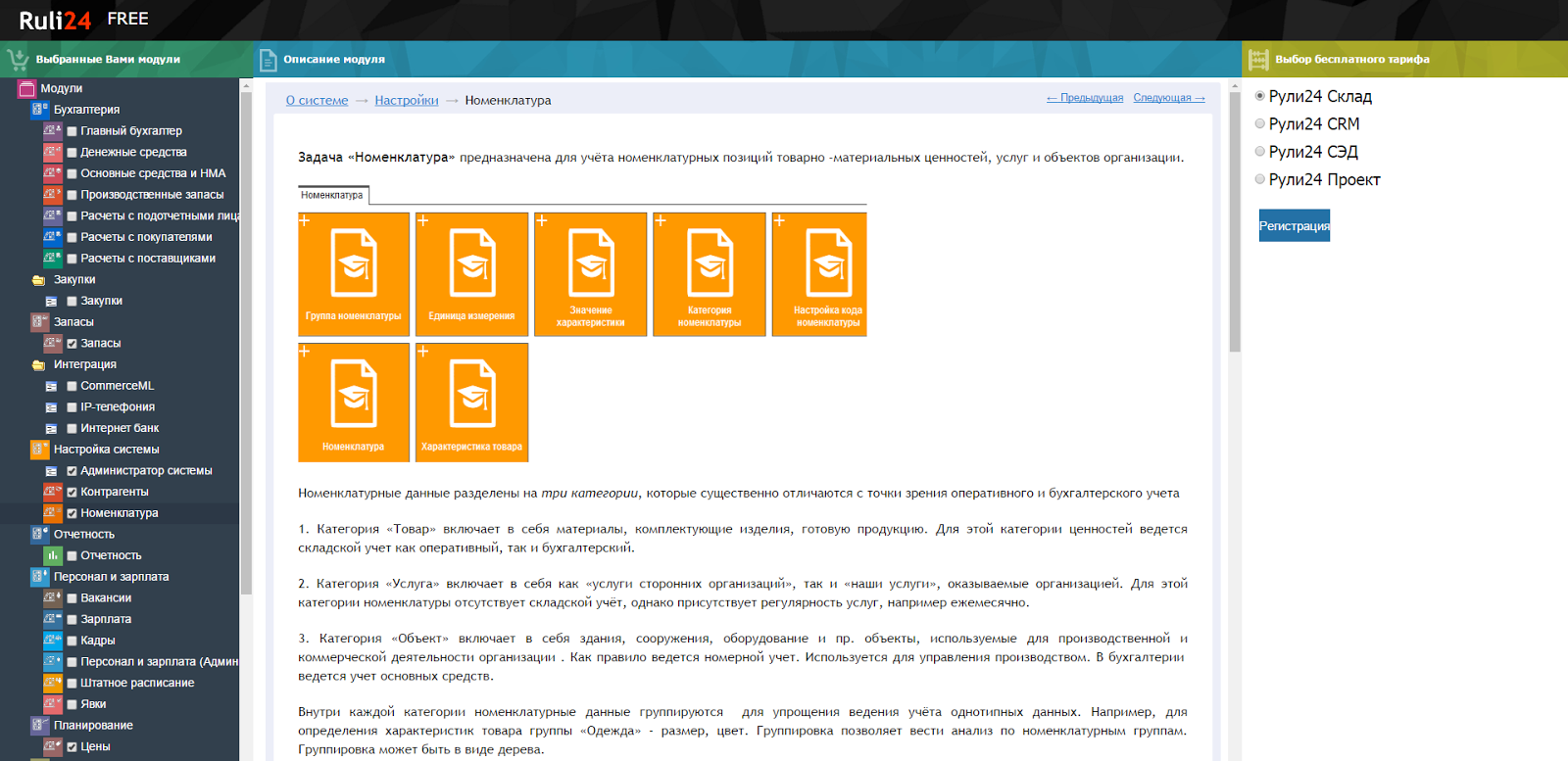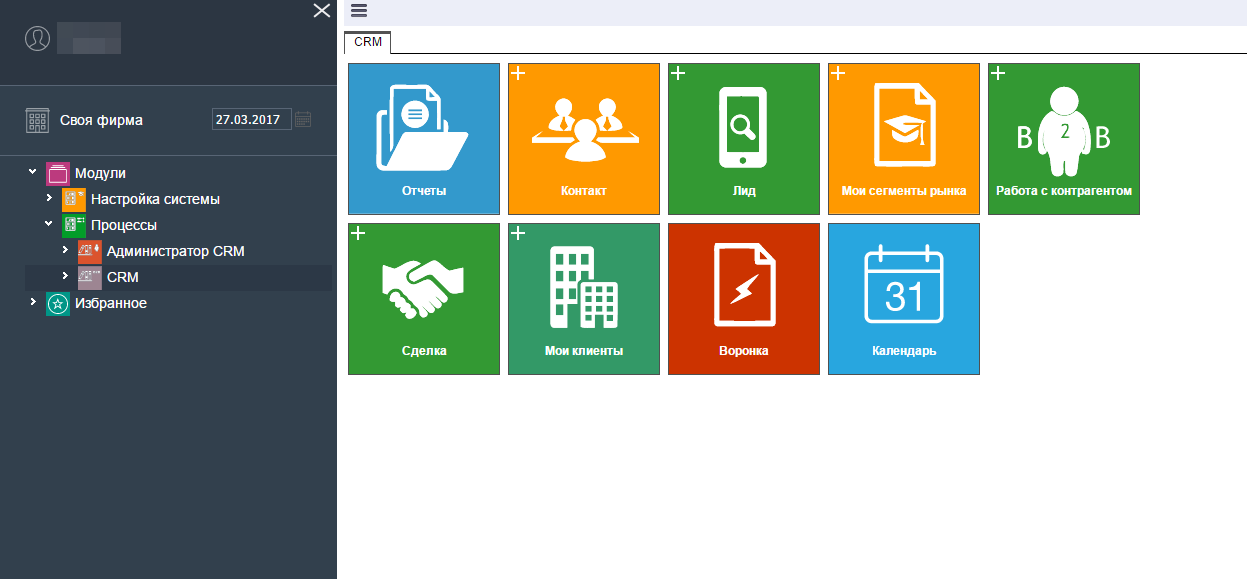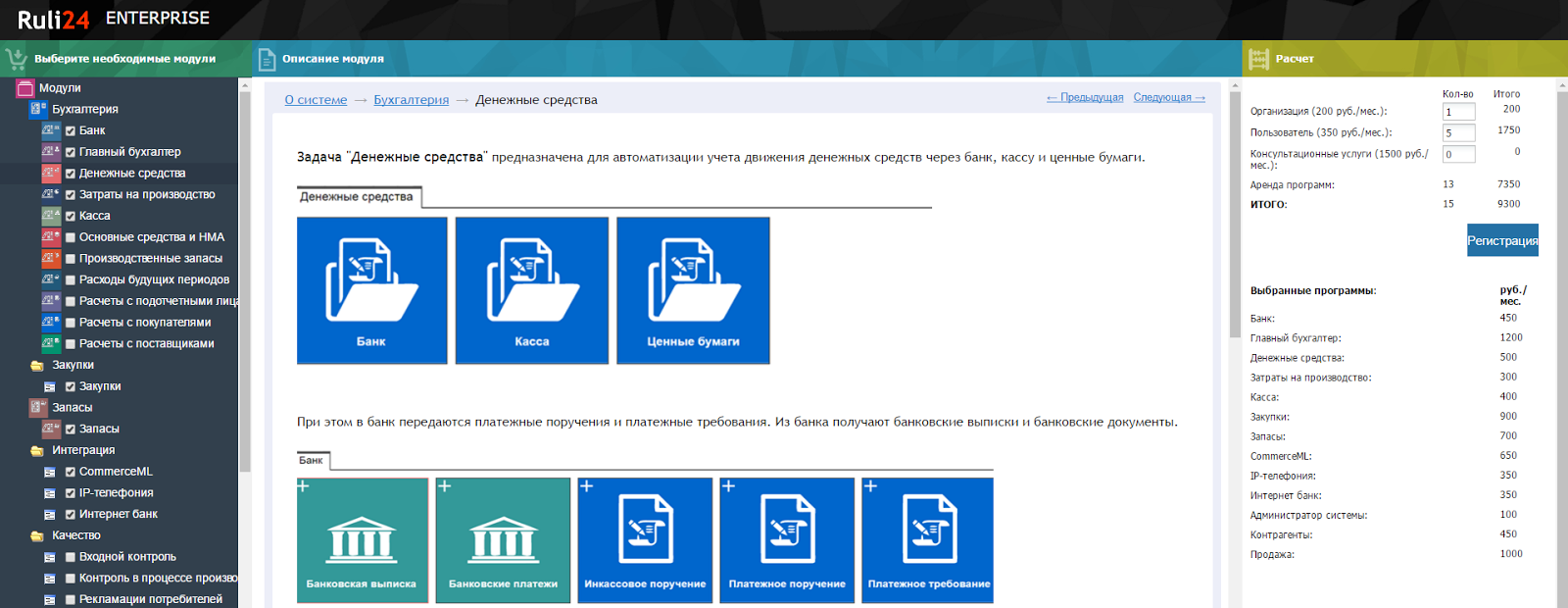Ruli24: how to grow in the clouds
Cloud solutions are tightly embedded in our lives. They carry out complex calculations, store and process big data, deploy billing, analytics, and company management systems. But the main reason for the popularity of cloud technologies is cost savings, especially relevant during a crisis. But it is not enough to be a profitable solution - you need to be comfortable. And here the problems begin.

Usually, work with a corporate information system (corporate information system) is as follows: at some stage in their life, companies decide to automate processes, select a CRM / ERP / xRM system and start working. After some time, new needs arise in the company and typical automation problems arise.
The problem of choosing a solution. Often at the start of the company they choose simple free or shareware solutions, work in them, accumulate data. The selected system has its own architecture, DBMS (database), software features. A new solution should ideally integrate seamlessly with the current one or be the same, but problems arise in all cases - often older versions of the same software are incompatible with younger ones.
')
Scaling problem. In any business at the growth stage, there is a sharp recruitment of employees or a sharp increase in the customer base. Business automation software (xRM, KIS) must cope with the task of quickly (instant) deploying additional workplaces and additional functionality. And if the first is somehow provided, then the second has problems - for example, new modules do not load the accumulated data automatically or require manual migration of all information and filling “their” directories. And it all happens just at the growth stage - when automation should be efficient, and the team should not be distracted by software configuration.
The problem of data transfer. We have already identified this problem - it really is a cross-cutting disaster in the process of company growth. You can export the data manually, you can modify the new solution, in order to successfully connect to the current database, you can simply process the data in Excel and load it into the new system. This is unpleasant, but possible if we are talking about a relatively small company. And if it is a retail or wholesaler with millions of records? Work literally rises - migration takes resources and incurs additional costs.
The problem of expanding functionality. At the initial stage, the company rarely has a developed commercial service, accounting, logistics, project management. Therefore, as it grows, it is necessary to include new processes and new divisions in the automation system. And here again there are two problems: either to expand the software by the older edition (which is not very common - the systems can be sharpened only under customer management), or buy new software.
The problem of modularity. How many systems (Trading, Accounting, Salary) - so many usernames / passwords in the event that the system is not modular. In a modular system, this problem is absent - as well as the problem of changing access keys when implementing other solutions from the same manufacturer. By the way, passwords are not the only problem; with each introduction of an older release even the same manufacturer often has to go through the path of data migration and reconciliation of all directories.
The problem of integration with third-party services pursues a company that has chosen the path of automation, from the first day - it is necessary to integrate with accounting systems (1C, etc.), mail, telephony, and, if necessary, a warehouse. Some modern cloud systems use connectors, plug-ins and widgets for integration - for which, of course, you have to pay separately.
The problem of learning and retraining. Even if the transition to the new software technically went flawlessly, you are guaranteed to get problems with the staff - the new system will require training and adaptation, which, ultimately, will again lead to a drop in the intensity and productivity of labor.
The problem of rising costs. The final problem caused by all the previous ones: the cost of migration, training, licenses, rework + loss of profits due to inefficient and manual work. Not exactly what the company needs at the growth stage.
By the way, part of the reason for these problems lies in the fact that companies turn to automation not immediately, but as they grow and form the need to store corporate data.
The problem of growth in the clouds has long troubled us - repeatedly at conferences we encountered customer stories that connected to the cloud service, but then, as the company grew and requirements, we began to look for other solutions, because the old ones were not ready to scale. And just started the problems described.
We had a KIC Ruli24 and the headache of those who were looking for growth in the clouds. We decided to make the growth of the automation system progressive: the company grows - so does the KIS. The basis of his ideas, we laid several principles.
Online configurator Rule24 will suit you if:
Thus, we managed to create a unique online configurator, which is designed not only to automate the business, but also to flexibly adapt to the changing needs of the business.
We have built our software based on the principles of functionality limitations in relation to business needs. Let's explain how it looks.
There is a Free configuration , which assumes free use and the absence of any technical support. You choose one of the applications you most need (Warehouse, CRM, EDMS, Project), the modules are already selected automatically - enter the registration data and get access to your Rule24. You can immediately start working and form your customer base. This version is suitable for individual entrepreneurs, freelancers, small companies up to 50 users, start-ups and other organizations that are just starting to automate and do not yet know the exact growth rate and scale of future expansion.

If the company grows (no more than 50 users) and the business scales, you can switch to Online configuration . You select the necessary modules and components with a tick, and the calculator in the window on the right counts how much a rental system will cost you per month. And at this moment our concept of configuration is revealed: you choose only what you and your business need - you want one accounting department or personnel management, and you want all modules. By the way, while you choose, in the main window you can read the description of each module - very convenient. At this level you can get implementation, installation and support services.

Finally, when from a strong company you become the market leader, the owner of factories and ships, you can turn to the Enterprise configuration . You no longer have restrictions on the number of users (more than 50), you choose any modules and get full technical support, the ability to refine and deploy the solution on a dedicated virtual server or on your own computing power. Both the developer and the partner work with you - the maximum level of attention and service.

How did we become different from ourselves a year ago? First of all, by changing the approach to the growth of the IT system with the growth of the business. Previously, we, like all market players, offered turnkey solutions and configurations that the business took and used. Flexibility was, but not in very large volumes. Now we have chosen a model, when, with the transition to a new configuration, there is no need to change anything, no new complex integration is needed. It is enough to choose exactly what you need. And this is flexibility, and savings, and an accurate understanding of the scale of growth.

Business automation problems
Usually, work with a corporate information system (corporate information system) is as follows: at some stage in their life, companies decide to automate processes, select a CRM / ERP / xRM system and start working. After some time, new needs arise in the company and typical automation problems arise.
The problem of choosing a solution. Often at the start of the company they choose simple free or shareware solutions, work in them, accumulate data. The selected system has its own architecture, DBMS (database), software features. A new solution should ideally integrate seamlessly with the current one or be the same, but problems arise in all cases - often older versions of the same software are incompatible with younger ones.
')
Scaling problem. In any business at the growth stage, there is a sharp recruitment of employees or a sharp increase in the customer base. Business automation software (xRM, KIS) must cope with the task of quickly (instant) deploying additional workplaces and additional functionality. And if the first is somehow provided, then the second has problems - for example, new modules do not load the accumulated data automatically or require manual migration of all information and filling “their” directories. And it all happens just at the growth stage - when automation should be efficient, and the team should not be distracted by software configuration.
The problem of data transfer. We have already identified this problem - it really is a cross-cutting disaster in the process of company growth. You can export the data manually, you can modify the new solution, in order to successfully connect to the current database, you can simply process the data in Excel and load it into the new system. This is unpleasant, but possible if we are talking about a relatively small company. And if it is a retail or wholesaler with millions of records? Work literally rises - migration takes resources and incurs additional costs.
The problem of expanding functionality. At the initial stage, the company rarely has a developed commercial service, accounting, logistics, project management. Therefore, as it grows, it is necessary to include new processes and new divisions in the automation system. And here again there are two problems: either to expand the software by the older edition (which is not very common - the systems can be sharpened only under customer management), or buy new software.
The problem of modularity. How many systems (Trading, Accounting, Salary) - so many usernames / passwords in the event that the system is not modular. In a modular system, this problem is absent - as well as the problem of changing access keys when implementing other solutions from the same manufacturer. By the way, passwords are not the only problem; with each introduction of an older release even the same manufacturer often has to go through the path of data migration and reconciliation of all directories.
The problem of integration with third-party services pursues a company that has chosen the path of automation, from the first day - it is necessary to integrate with accounting systems (1C, etc.), mail, telephony, and, if necessary, a warehouse. Some modern cloud systems use connectors, plug-ins and widgets for integration - for which, of course, you have to pay separately.
The problem of learning and retraining. Even if the transition to the new software technically went flawlessly, you are guaranteed to get problems with the staff - the new system will require training and adaptation, which, ultimately, will again lead to a drop in the intensity and productivity of labor.
The problem of rising costs. The final problem caused by all the previous ones: the cost of migration, training, licenses, rework + loss of profits due to inefficient and manual work. Not exactly what the company needs at the growth stage.
By the way, part of the reason for these problems lies in the fact that companies turn to automation not immediately, but as they grow and form the need to store corporate data.
The cloud in which to grow comfortably
The problem of growth in the clouds has long troubled us - repeatedly at conferences we encountered customer stories that connected to the cloud service, but then, as the company grew and requirements, we began to look for other solutions, because the old ones were not ready to scale. And just started the problems described.
We had a KIC Ruli24 and the headache of those who were looking for growth in the clouds. We decided to make the growth of the automation system progressive: the company grows - so does the KIS. The basis of his ideas, we laid several principles.
- An integrated approach to the automation facility (company) as a combination of resources, processes, functions and decision-making principles. The scheme is simple: a process is a complex of functions in the performance of which resources are involved. But the technical implementation on the software side is complicated - this is how we try to provide the most efficient automation.
- SaaS delivery is a simple scheme of providing service as a service. You do not pay for hardware resources (servers), for a DBMS, you do not need support and administration specialists — all of us care, professionals from Ruli24. A monthly subscription fee is paid for the software - the same as for a cell phone or hosting.
- Easy transition from solution to solution. We have implemented the best option - in a matter of minutes you can switch modules of the version in the online configurator: switch from free to paid, extend functionality, etc. At the same time, you do not experience any migration problems.
- Problems of iron and resources on our side. We have our own data center, the computing capabilities of which allow us to ensure the smooth operation of the service, while specialists provide support to users. The KIS Ruli24 system works under the control of the Oracle DBMS - we also undertake its administration.
- The smaller the company, the less it pays. This is logical: less resources - less costs. At the initial stage, companies are not ready to invest in complex expensive software - that is why we offer a free version of the Ruli24 system. As you expand, you can connect new modules, expand the number of projects and tasks, and already pay exactly what you need.
- Updates roll in unnoticed. All updates occur on our side and users do not need to break away from work - at the next logon the updated version will be loaded.
- Scalable. As the functionality requirements grow and increase, companies can choose solutions from the configurator, expand the number of tasks, etc. At the same time, migration to new opportunities occurs almost seamlessly.
- Security. Ruli24 includes modern means of protection that involve countering external and internal factors: means of identification (identification) and authentication (authentication) of users of the system, means of restricting access of registered users of the system to resources (tasks, objects) of the system, means of ensuring and controlling the integrity of software and information resources, means of operational control and event registration.
Online configurator Rule24 will suit you if:
- there is a desire to go to the clouds and clearly understand the costs of IT infrastructure
- there is a desire to grow in the clouds, changing the volume of services as it grows or is optimized, not overpaying for extra functionality
- there is a desire to grow in the clouds and go to dedicated or own servers - we help to make such a migration.
Thus, we managed to create a unique online configurator, which is designed not only to automate the business, but also to flexibly adapt to the changing needs of the business.
From free xRM to Enterprise KIS
We have built our software based on the principles of functionality limitations in relation to business needs. Let's explain how it looks.
There is a Free configuration , which assumes free use and the absence of any technical support. You choose one of the applications you most need (Warehouse, CRM, EDMS, Project), the modules are already selected automatically - enter the registration data and get access to your Rule24. You can immediately start working and form your customer base. This version is suitable for individual entrepreneurs, freelancers, small companies up to 50 users, start-ups and other organizations that are just starting to automate and do not yet know the exact growth rate and scale of future expansion.

If the company grows (no more than 50 users) and the business scales, you can switch to Online configuration . You select the necessary modules and components with a tick, and the calculator in the window on the right counts how much a rental system will cost you per month. And at this moment our concept of configuration is revealed: you choose only what you and your business need - you want one accounting department or personnel management, and you want all modules. By the way, while you choose, in the main window you can read the description of each module - very convenient. At this level you can get implementation, installation and support services.

Finally, when from a strong company you become the market leader, the owner of factories and ships, you can turn to the Enterprise configuration . You no longer have restrictions on the number of users (more than 50), you choose any modules and get full technical support, the ability to refine and deploy the solution on a dedicated virtual server or on your own computing power. Both the developer and the partner work with you - the maximum level of attention and service.

How did we become different from ourselves a year ago? First of all, by changing the approach to the growth of the IT system with the growth of the business. Previously, we, like all market players, offered turnkey solutions and configurations that the business took and used. Flexibility was, but not in very large volumes. Now we have chosen a model, when, with the transition to a new configuration, there is no need to change anything, no new complex integration is needed. It is enough to choose exactly what you need. And this is flexibility, and savings, and an accurate understanding of the scale of growth.
Source: https://habr.com/ru/post/326184/
All Articles